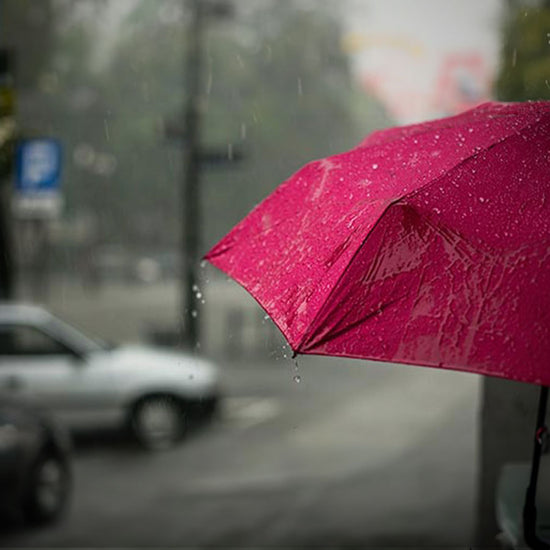Top tips for getting your property back in shape
Going through a flood can be really tough, but acting quickly to clean up is key to reducing damage and keeping your home safe. Here’s a simple step-by-step guide to help you manage after a flood.
What to do following a Flood?
-
Safety First:
Ensure the area is safe to enter and check for structural damages whilst wearing protective gear.
Before embarking on the flood cleanup journey, prioritising safety is paramount. Begin by conducting a thorough assessment of the area for any structural damages that could pose risks. It's essential to ensure that the building is structurally sound and there are no immediate hazards such as gas leaks or electrical issues. Wearing protective gear, including gloves, waterproof boots, and masks, is crucial to protect against contaminants. Additionally, ensure that the power is turned off at the source to prevent electrical hazards. Only after confirming that the area is safe to enter, should you proceed with the cleanup process. This careful approach ensures not only your safety but also the effectiveness of the cleanup efforts.
-
Document Damage:
Take photos for insurance claims before you start cleaning.
When documenting damage for insurance claims, it's crucial to meticulously record every aspect of the damage before initiating cleanup or repairs. Start by taking clear, detailed photographs or videos of all affected areas and items, capturing the extent of the water damage from multiple angles. This visual evidence should be comprehensive, including both structural damages and damaged personal property. Additionally, compile a detailed inventory list of damaged or lost items, noting their age, purchase price, and estimated replacement costs. This thorough documentation is invaluable for accurately filing your insurance claim, ensuring you receive fair compensation for your losses.
-
Remove Water:
Use Floodshield pumps to efficiently remove standing water. For smaller areas, our absorbent pads can also be effective.
Removing water efficiently after a flood is crucial to prevent further damage and hasten recovery. Floodshield pumps are designed for quick removal of large volumes of water, making them ideal for dealing with significant flooding. For smaller spaces or residual moisture, our absorbent pads come into play, offering a practical solution to soak up water without the need for heavy machinery. Employing these methods strategically can significantly reduce cleanup time and mitigate the potential for mold and structural damage.
-
Dry Out:
Ventilate and dehumidify the area thoroughly to prevent mould growth.
Drying out your space after a flood is a critical step to prevent mold and mildew growth, which can cause additional damage and health issues. It involves more than just removing visible water; you need to ensure the area is thoroughly aired out. Opening windows and using fans promotes airflow, while dehumidifiers pull moisture from the air and materials in the room. This process can take time, but it's essential for restoring the health of your home environment and preventing long-term problems.
How to remove floodwater?
-
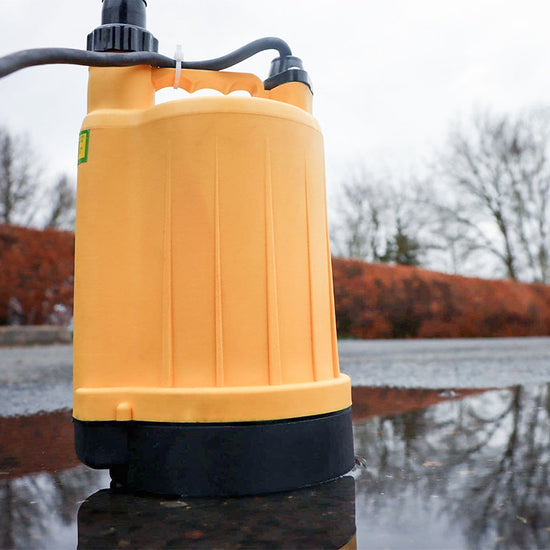
Pumps:
Shop pumpsIdeal for quickly removing large volumes of water.
Pumps are a crucial tool in floodwater removal, especially when dealing with large volumes. They offer a quick and effective method to clear water from affected areas, significantly reducing the time and effort needed compared to manual methods. This makes them an essential part of any flood response strategy to minimise damage and accelerate the drying process.
-
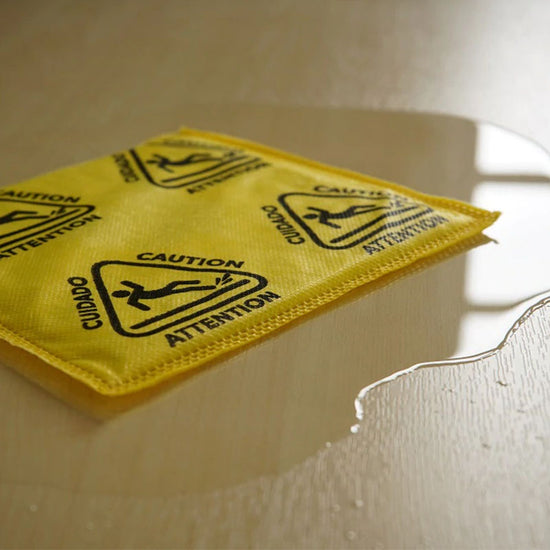
Absorbent Pads:
Shop padsPerfect for soaking up residual moisture in hard-to-reach places.
Absorbent pads are highly effective for mopping up the moisture that stubbornly remains after the bulk of the floodwater has been removed. They excel in drawing water from nooks and crannies where larger equipment cannot reach, and are particularly useful in spaces with intricate detailing or under equipment and furniture, providing an efficient solution to residual dampness and the risk of mould.
-
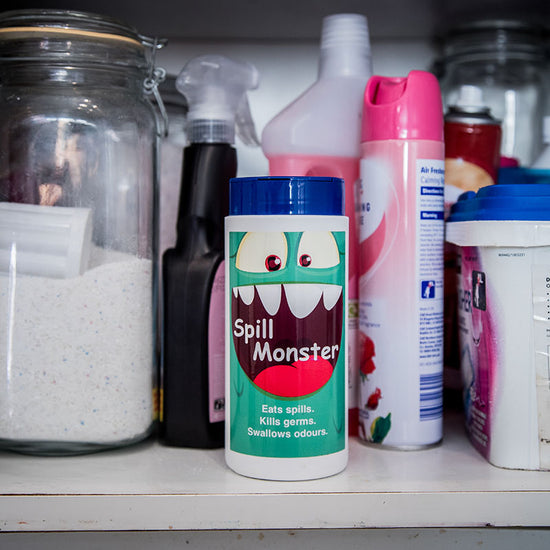
Other Options:
Shop rangeMore ways to remove floodwater from your property.
In addition to pumps, using mops can be effective for manually removing smaller amounts of floodwater. Spill Monster absorbent granules are excellent for soaking up water and moisture in areas that are difficult to reach. These granules can be spread over wet surfaces to absorb water quickly, then swept up and disposed of, offering a convenient and efficient cleanup option for various situations.
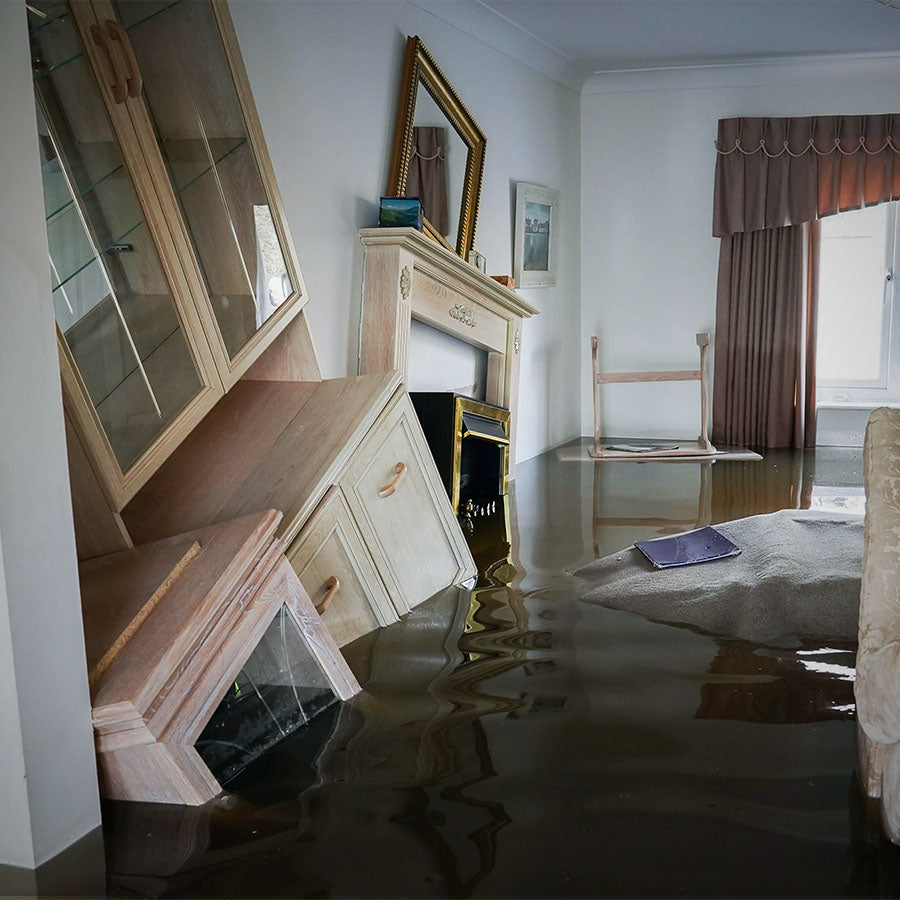
What to do With floodwater damaged furniture and belongings?
When dealing with flood-damaged furniture and belongings, it's important to first assess each item to determine if it can be salvaged, separating items that are too damaged to repair. For those that can be saved, thorough cleaning and disinfection are critical steps to prevent mold growth and ensure they are safe to use again. This process involves careful evaluation and appropriate disposal or restoration actions, tailored to the condition and material of each piece, ensuring your home can be safely and comfortably restored.
For those that cannot be saved, consider local regulations and guidelines for disposal. Many areas have specific protocols for disposing of large, water-damaged items to ensure environmental safety and health. Often, this may involve scheduling special pickups with waste management services or taking items to designated disposal facilities. Always check with your local authorities to follow the correct procedures and ensure safe, responsible disposal of damaged furniture.
Our Top 10 Tips following a flood:
-
Ensure Safe To Enter:
Verify structural stability and electrical safety before re-entering property
-
Document Damage:
Photograph the damage and aftermath for insurance claims purposes
-
Check Condition Of Utilities:
Ensure gas and electricity connections are not damaged and safe to be restored
-
Prioritise Cleaning Up:
The first step is removing flood water and drying out spaces straight away
-
Protect Your Health:
Floodwater is highly hazardous so wear protective clothing during cleanup
-
Salvage What You Can:
Carefully clean, disinfect and dry any recoverable items that you want to keep
-
Dispose Responsibly:
Discard any contaminated items according to local regulations
-
Disinfect Everything:
Thoroughly clean surfaces, belongings, etc to kill bacteria and prevent mould
-
Work to Prevent Mould:
Ventilate the property well and use dehumidifiers to remove moisture
-
Seek Assistance When Needed:
Contact professionals for extensive structural damage or big clean up jobs
Remember, while the task of cleaning up after a flood can seem overwhelming, taking it step by step can make the process manageable and effective. Visit our website for more tips, products, and guidance on flood prevention and cleanup.
Frequently Asked Questions
How can I dry out my home effectively to prevent mould growth?
Ventilating the area by opening windows and using fans promotes airflow, while dehumidifiers help to remove moisture from the air and materials. This thorough drying process is essential for preventing mould and mildew growth, which can lead to health issues and further damage.
What precautions should I take when cleaning and disinfecting after a flood?
Wear protective clothing, including gloves, masks, and waterproof boots, to protect yourself from contaminants. Use EPA-approved disinfectants to clean all surfaces affected by floodwater thoroughly. Ensure proper ventilation to avoid inhaling harmful chemicals or mould spores.
What should I do if my electrical systems have been affected by floodwater?
Do not attempt to turn on or use electrical appliances until they have been checked by a professional electrician. Floodwater can cause significant damage to electrical systems, posing serious safety risks. An electrician can assess the extent of the damage, perform necessary repairs, and ensure that your electrical system is safe to use.
How can I ensure the structural integrity of my home following a flood?
Inspect your home for any visible signs of structural damage, such as cracks in the foundation, walls, and ceilings. Pay special attention to floors and doors for any signs of warping. It's advisable to consult with a structural engineer or building inspector to assess the damage and recommend necessary repairs.
Can flood-damaged carpets and rugs be saved?
It depends on the extent of the damage and the duration of water exposure. Carpets and rugs soaked in floodwater often need to be discarded due to the risk of mold and mildew. If you attempt to save them, use professional cleaning services that specialise in water damage restoration. However, in most cases, replacement is safer and more cost-effective.
What should I do if my important documents get damaged by floodwater?
Rinse and gently clean documents with clean water if they are coated with mud or debris. If possible, freeze them in airtight bags to prevent mould growth and further deterioration. Later, they can be air-dried or taken to a professional document restoration service to salvage as much as possible.
What precautions should I take when using a generator during flood cleanup?
Always operate generators outdoors, away from windows and doors, to prevent carbon monoxide poisoning. Ensure it's placed on a dry surface, possibly elevated to avoid water contact. Never plug a generator directly into your home’s electrical system without a transfer switch, as it can create a back feed risk for utility workers and neighbours.
How can you minimise mould growth after a flood?
Increase ventilation to the affected area by opening windows and using fans. Remove and discard porous materials that cannot be cleaned. Clean wet surfaces with a mold-inhibiting solution and keep the area dry.
What to consider when deciding to hire professionals for flood cleanup?
Assess the scale of damage and the potential for hazardous materials like asbestos or mold. If the damage is extensive or if hazardous materials are present, it's crucial to hire professionals who have the expertise and equipment to safely restore your property.
What safety measures should be considered when assessing flood damage at night?
Use waterproof, battery-operated flashlights or headlamps for lighting, as these reduce the risk of electric shock and ensure mobility. Avoid using candles or any open flames due to potential gas leaks. Wear reflective clothing to be visible, and always work with a buddy for safety.
More help with floods...
-
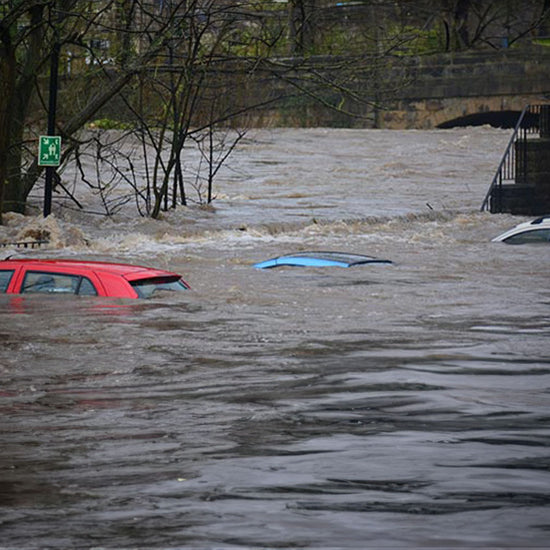
Helpful Flood Resources
View resourcesFREE information to help you beware of, prepare for & deal with floods.
-

Flood Preparation Checklist
View checklistCheck out our checklist to ensure you are prepared for the next flood.
-
